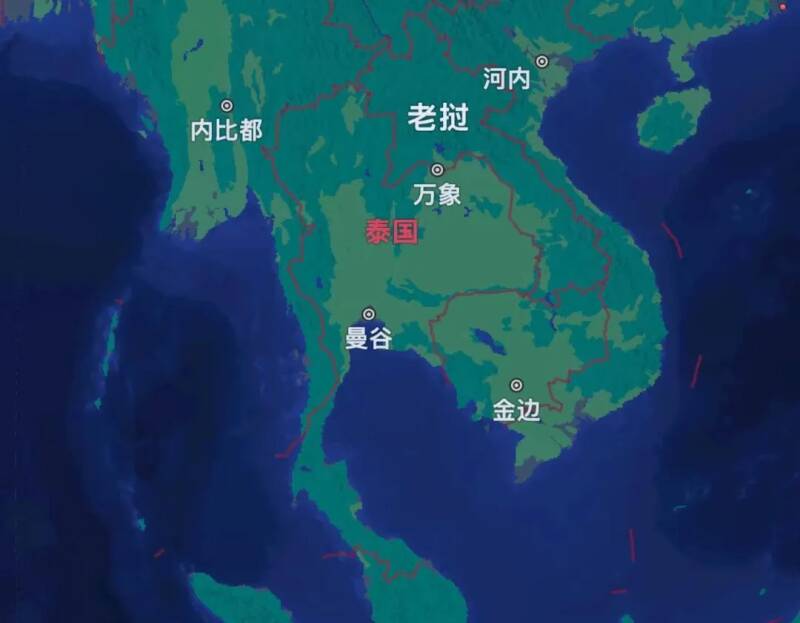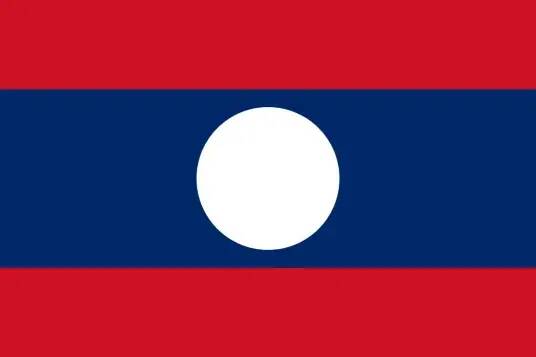Introduction to the current situation of the planting variety industry in Laos coffee producing areas in Asian countries
When it comes to Asian coffee, many people will think of Indonesia, Vietnam and other countries. After all, Indonesia has the famous Mantenin coffee, while Vietnam is famous for being the second largest coffee producer in the world, so many people ignore Laos as a coffee producer.
Laos Laos
The Lao people's Democratic Republic (The Lao People's Democratic Republic) is a landlocked country located in the northern part of the Indo-China Peninsula, bordering China, Cambodia, Vietnam, Myanmar and Thailand. With a land area of 23.68 square kilometers, there are 17 provinces and 1 municipality directly under the Central Government.

The Lao national flag is called a rectangle. The parallel rectangle in the middle of the flag face is blue, accounting for half of the flag surface. The top and bottom of the flag is a red rectangle, each accounting for 1/4 of the flag face, and the blue part is a white round wheel in the middle. Among them, blue symbolizes a rich and beautiful land, indicating that the people love a peaceful and peaceful life, while red symbolizes revolution and defends national dignity at the cost of blood, and the white circle also represents the full moon, symbolizing the bright moon hanging high over the Mekong River.

The topography of the country is high in the north and low in the south, bordering the western Yunnan Plateau in the north, the Changshan Mountains in the east, and the Mekong Valley and basins and plains along the Mekong River and its tributaries in the west. According to the United Nations soil system classification, Laos has 12 soil types, of which the distribution area of low activity and strong acid soil is the largest, followed by high activity and strong acid soil, high activity leaching soil and embryonic soil. These four types of soil account for more than 90% and are widely distributed in northern, central and southern Laos. These soils are very suitable for agricultural cultivation.
Laos has a tropical and subtropical monsoon climate, with a rainy season from May to October and a dry season from November to April. The annual average temperature is 26 ℃, the rainfall is abundant, and the annual rainfall is about 2000 mm. With high altitude, abundant Rain Water and climate, and a plateau with volcanic eruptions and accumulation, it can be said to be a natural treasure for coffee cultivation.
Coffee producing area
The history of coffee dates back to the early 20th century, when Laos was under French colonization, when the French began to grow coffee on the Bolaven Plateau plateau in southern Laos, mainly iron pickup and bourbon varieties. Later, however, after experiencing disasters such as war and coffee disease, the robusta species with stronger disease resistance and higher yield were planted. At present, the Robusta species are still mainly robusta, and Arabica varieties will also be planted. Arabica accounts for 1/3 of the total output. The harvest period in the country is mainly from November to March of the following year.
Brawan Plateau (Bolaven Plateau): the name comes from the "the Laven", the most populous ethnic group in the region, which originally means "the home of the Lavan people". It is located between the Annan Mountains, with the border between Laos and Vietnam to the east and the Mekong River to the west at an altitude of about 1000 to 1350 meters.
The Brawan Plateau has the longest history of coffee cultivation in Laos, and it is also the region with the widest planting area and the largest coffee production. Among them, the three areas covered by the plateau account for Basong Paksong in Basong province, Thateng in Sarawan province and Laongam in Saigon province, which accounts for 95 per cent of the total coffee production in Laos. The coffee planting area in the three areas is about 70000 hectares.
Present situation of coffee industry
At present, the main exporting countries of Laos are Vietnam, Thailand and China. Laos coffee is mainly family-run small coffee farmers, but most of them are sold domestically and less exported, and the production technology of coffee beans can be further improved, and there are fewer large coffee estates run by enterprises. its coffee potential needs to be cooperated and enhanced by the government and the private sector, but its coffee flavor is mild and smooth, and the acidity is appropriate, so it is a good choice.
Important Notice :
前街咖啡 FrontStreet Coffee has moved to new addredd:
FrontStreet Coffee Address: 315,Donghua East Road,GuangZhou
Tel:020 38364473
- Prev

10 camping chairs were stolen from the cafe! Thief: Blame it for being too comfortable
▲ Click to pay attention| Daily Boutique Coffee Culture Magazine Coffee Workshop I don't know when it started. A coffee shop can be without a coffee machine, but it cannot be without camping tables and chairs. These days, camping-style furniture is popular throughout the catering industry. Even in the smallest store, owners like to put a few camping pictures indoors or in front of the door
- Next

Sudden! Guatemala coffee may be banned from being imported, Ministry of Foreign Affairs responds
On May 24, Foreign Ministry Spokesperson Wang Wenbin responded to questions about the import of coffee from Guatemala at a regular press conference. At the meeting, a reporter asked and quoted the news from the Guatemala Exporters Union, saying that China had banned coffee and macadamia nuts from Guatemala from entering China. Wang Wenbin responded to the above news at the press conference
Related
- What is the standard process for the purpose of coffee cup testing? What is the difference between hand-brewed coffee and cup testing?
- How to use hand-brewed coffee paragon small golden balls? How does cold coffee lock in the aroma of coffee?
- Is American coffee black? What is the difference between American coffee and drip coffee?
- Unexpected! Well-known tea beverage brand Lele Tea will withdraw from the Zhengzhou market!
- Starbucks enters the fashion and beauty industry?! Netizen: Give me an ice American eye cream
- Why can American refills for free? The difference between Americano and American drip pot coffee
- Being chased out of the rain in front of Starbucks?! Store: Sheltering from rain under umbrellas poses a safety hazard
- The white moonlight has changed?! Lucky launches "Big Winter Pear American"
- Hand-brewed coffee three-stage method, high-sweet and universal brewing method to share! What does the high sweet water level of hand-brewed coffee mean?
- What is the difference between raw, refined and full espresso coffee? How to extract espresso and taste good?

